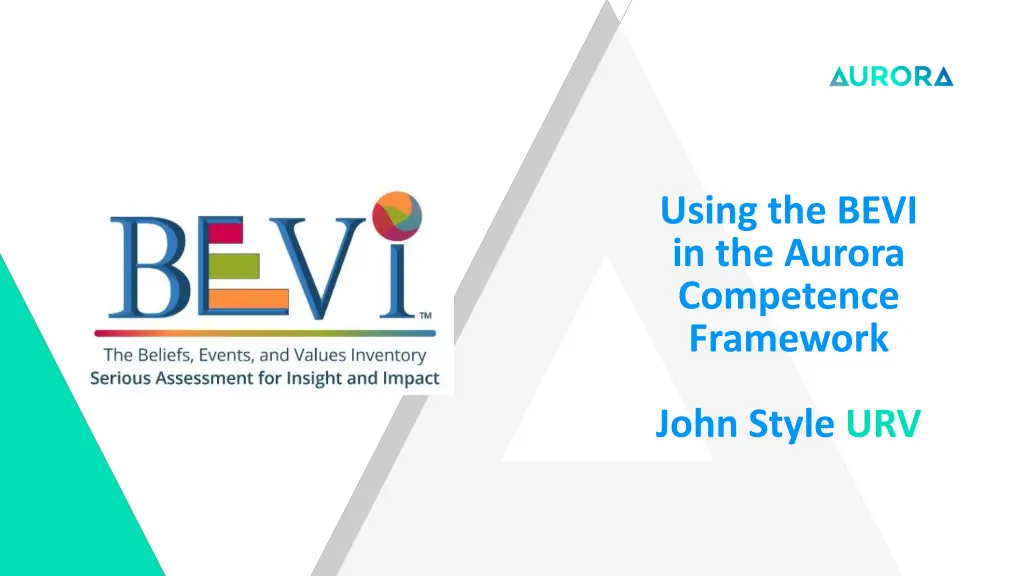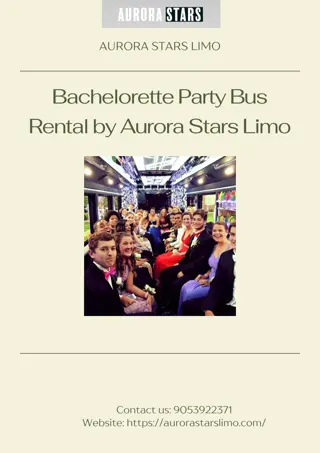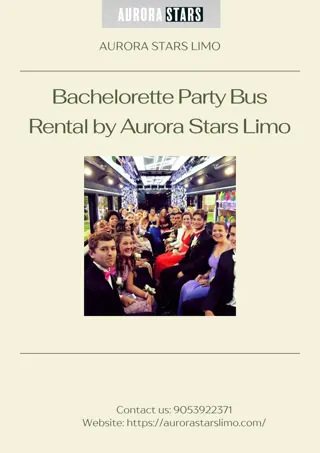
Using the BEVI in Aurora Competence Framework Evaluation
Explore the impact of education evaluation using BEVI in the Aurora Competence Framework. Learn about the form of the test, results, global competencies measurement, and sociocultural openness correlations.
Download Presentation

Please find below an Image/Link to download the presentation.
The content on the website is provided AS IS for your information and personal use only. It may not be sold, licensed, or shared on other websites without obtaining consent from the author. If you encounter any issues during the download, it is possible that the publisher has removed the file from their server.
You are allowed to download the files provided on this website for personal or commercial use, subject to the condition that they are used lawfully. All files are the property of their respective owners.
The content on the website is provided AS IS for your information and personal use only. It may not be sold, licensed, or shared on other websites without obtaining consent from the author.
E N D
Presentation Transcript
Using the BEVI in the Aurora Competence Framework John Style URV
THE STRUCTURE OF THE PRESENTATION Evaluating the Impact of Education What does the BEVI test? The Form of the Test The Results of the Test Equilintegration Theory and the EI Self Uses of the BEVI in Aurora
Evaluating the Impact of Education Is the student's subjective evaluation / questionnaire sufficient? Objective test Is it enough to evaluate only after the fact? Comparison before and after Surface validity Face validity Is it possible to compare with other programs and non- participating students? Yes/No?
Global Competencies measurement Visible part (Explicit) knowledge Skills Easy Emotions Difficult Motivation Invisible part (Latent) Values BEVI Very difficult Belief Desire Study abroad, etc. Transformative Learning
The Form of the test Web-based (takethebevi.com) 20 background questions (age, gender, nationality, number of countries visited, etc.) 185 questions regarding psychological characteristics Includes questions with low surface validity / data accuracy verification Choose from a 4-step Likert scale 3 Qualitative questions Student receives an Individual Report Administrator can generate Group Reports
The Results of the Test Pre-entry Freshmen Students at Orientation (N = 690) Highly Diverse, Mostly Junior/Senior, Undergraduate Leaders (N = 38)
The Results of the Test The Decile Group Profile
Results Indications on Sociocultural Openness Correlation Matrix Findings Above .40 Between Sociocultural Openness and Other BEVI Scales Needs Closure (-.90) Ecological Resonance (.88) Socioemotional Convergence (.82) Basic Closedness (-.81) Identity Closure (-.71) Emotional Attunement (.77) Socioreligious Traditionalism (-.62) Hard Structure (-.58) Negative Life Events (-.57) Divergent Determinism (-.50)
Indications on Sociocultural Openness 2 Results Interpreting Correlation Matrix Findings: Overall, individuals high on Sociocultural Openness
Equilintegration Equilintegration (EI) Theory (EI) Theory EI Theory draws upon a wide range of theoretical, empirical, and applied perspectives to account for the dialectic process between the transmission and internalization of beliefs and values, and constituent aspects of self-regulation, content, structure, affect, attribution, and development EI theory explain[s] the processes by which beliefs, values, and worldviews are acquired and maintained, why their alteration is typically resisted, and how and under what circumstances their modification occurs the BEVI is designed to identify and predict a variety of developmental, affective, and attributional processes and outcomes that are integral to EI Theory (Shealy, 2004, p. 1075).
Uses of the BEVI in Aurora Giving Teachers valuable information about the psychological make-up of their groups at the start of the course. Detecting potential for conflict between sub-groups in a class, in order to avoid it. Detects change in a group during and after an educational experience. Detects when a course/subject/experience has produced the expected change in a group. Allows longitudinal tests to measure change within classes or institutions. Allow accurate group portraits of the different parts of an institution, from which to guide policy and strategy in encouraging more open, engaged students. In discussion with student groups, it encourages students to reflect on the complexity within their class and be more tolerant. Generating Research on Programme Planning, Course Development, Mobility Programmes, Transformational Learning initiatives, Competence Acquisition
Availability of the BEVI in Aurora Thanks for your attention NB.1 The BEVI is available to ALL Aurora universities for free for the duration of the first phase of the European Universities project. NB.2. The URV will organize training courses for BEVI administrators in collaboration with The BEVI team. John Style URV john.style@urv.cat






















